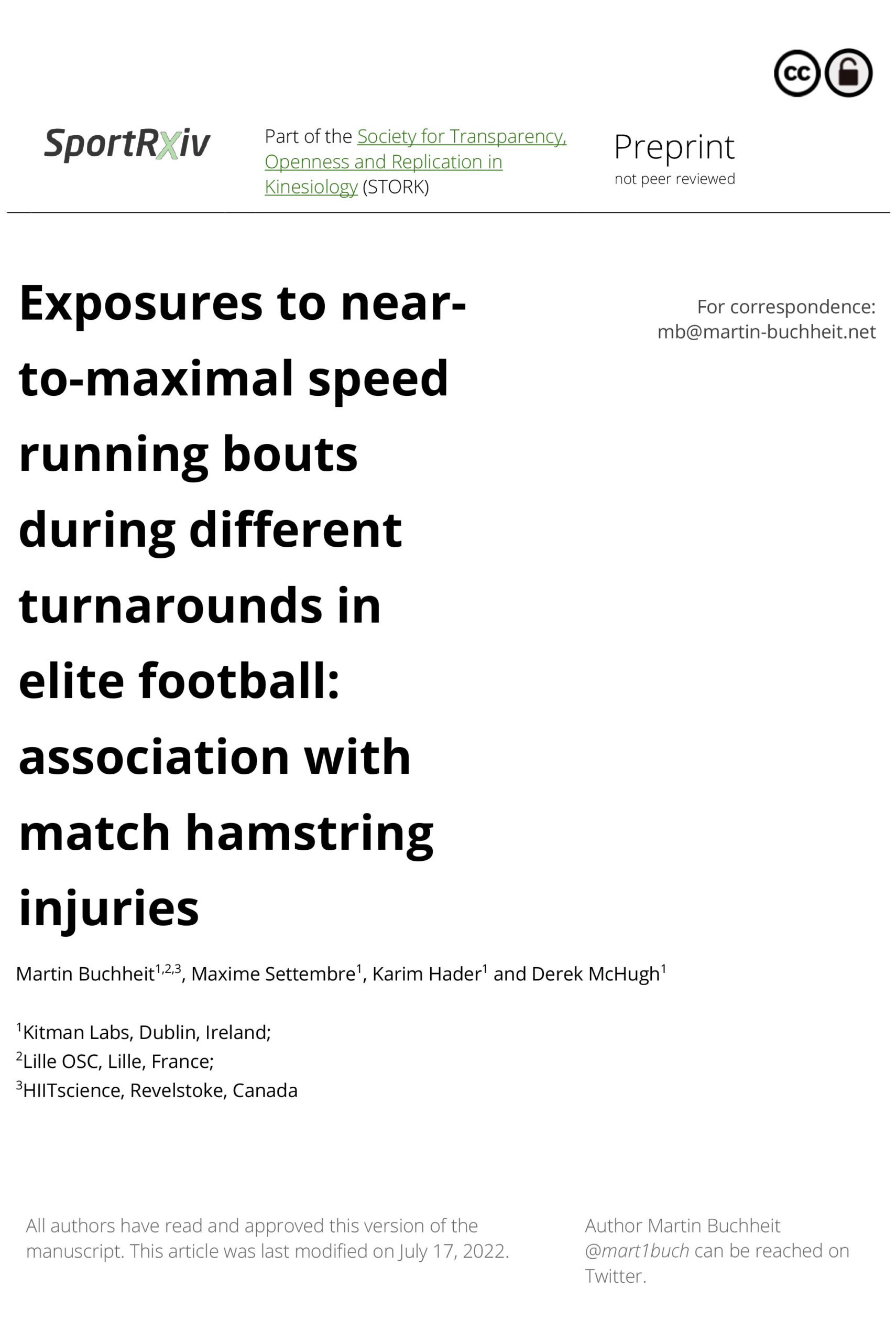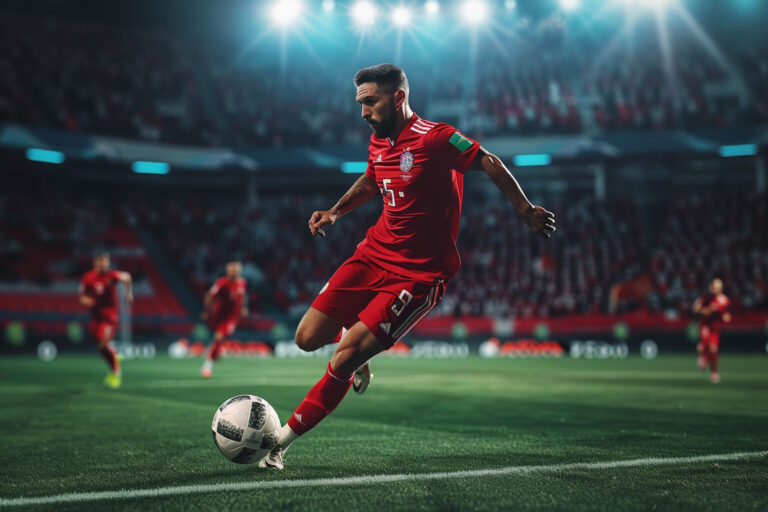In this study, we explain exposures to near-to-maximal speed running bouts during different turnarounds in elite football association with match hamstring injuries.
You will also find in this study:
- The large majority of players arrived at the match without having been exposed to near-to-MSS running bouts during the training days of the current turnaround (60% for >85% MSS, 76% for >90% MSS and 90% for >95% MSS).
- There were linear correlations between the number of training-sequences including near-to-MSS running exposures, and the length of the turnarounds.
Reaching >95% of MSS during training was more frequently associated with lower rates of match hamstring injuries than when only reaching >85% or >90%. - While association doesn’t imply causality, programming 95% exposures at D-2 may be the more relevant strategy to decrease the incidence of non-contact match hamstring injuries than no programming exposures at all, or having those exposures at D-3 and/or earlier in week.
- If D-2 was to be the most appropriate day for near-to-MSS exposures, the programming of the other days of the week needs to be tailored accordingly (i.e., D-4 and D-3), so that players don’t reach D-2 with excessive levels of neuromuscular fatigue – not to be at higher risk of hamstring injuries during the exposures themselves.



